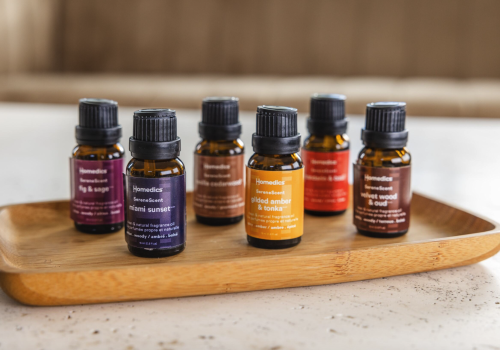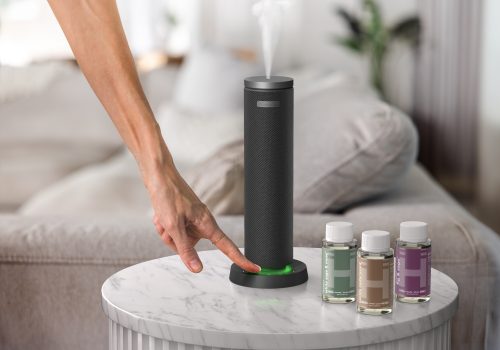Do Massage Guns Work? The Science of Percussive Therapy
Massage guns might seem like the latest fitness fad, but these at-home physical therapy devices bring real recovery benefits to casual users and professional athletes alike.
Also known as percussive therapy massagers, these devices use powerful, targeted pressure to offer the health benefits of a professional massage right in the comfort of your home. Learn more about how percussive therapy massage guns work, how they relieve pain, and how you can use one to boost your recovery.
PERCUSSIVE THERAPY: MORE THAN THE LATEST TREND
Massage guns have quickly become one of the most popular trends in workout recovery and home health. But they’re more than a fad; massage guns have proven to bring important benefits for sore muscles.
Beyond simple home massages, massage guns are powerful recovery tools for professional trainers and athletes looking for an edge over the competition. The portability of massage guns gives athletes better flexibility and more specific targeting for their recovery.
Even better, you don’t need to book appointments or pay a high fee for an hour with a professional massage therapist.
WHAT IS A MASSAGE GUN?
A massage gun is a handheld device that’s similar in shape to an electric drill. It features a handle that you hold with one hand and a massage head—a firm, round attachment that thumps rapidly against your skin, impacting the muscle beneath and delivering the percussive therapy.
Most massage guns come with several (or a large variety of) attachment heads for various treatments. Common heads include the following:
•The round head is designed to target pressure points and specific problem areas.
•Flat heads massage small parts of larger muscle groups.
•U-shaped heads are designed to massage the muscles along your spine and around your joints.
•Finally, the trigger point is meant for general use, capable of massaging muscles of any size.
WHAT IS PERCUSSIVE THERAPY?
Percussive therapy is a type of physical therapy that uses repeated bursts of pressure to massage muscles. Percussive therapy offers more specific control over the targeted muscle than foam rollers and other static recovery devices. Usually, percussive therapy involves using an electric massage gun to relieve muscle tension.
How Do Massage Guns Work?
Percussive therapy loosens soft tissue and increases blood flow. Fascia, which wraps around your muscles and joints, can become inflamed and cause pain. Research has shown that tight fascia may also limit your range of motion.
When a muscle group is stiff and limits the range of motion of a specific part of your body, other muscles will overcompensate. That puts you at risk of potentially serious injury.
Percussive therapy aims to prevent that tightness, improve range of motion, and speed up muscle recovery. Unlike vibration therapy and foam rolling, percussive therapy massage guns can penetrate up to an inch into your soft tissue, stimulating your muscles and helping your brain release tension.
You can use a massage gun to perform percussive therapy before a workout or afterward. Pre-workout percussive therapy can prevent future soreness and improve range of motion. Post-workout percussive therapy helps accelerate muscle recovery and remove some of the waste products, such as lactic acid, that cause soreness and stiffness.
It’s usually best to perform percussive therapy using a massage gun on yourself. That way, you know exactly how much pressure you’re comfortable with and how deeply you should massage.
HOW IS PERCUSSIVE THERAPY DIFFERENT FROM VIBRATION THERAPY?
Vibration therapy typically aims to relieve general stress and provide a small increase in blood flow. These devices vibrate against the skin to provide a localized or whole-body feeling of relief. By causing muscles to tense and relax, vibration therapy brings minor soreness and stiffness relief.
Percussive therapy is a more aggressive, more targeted form of muscle therapy. It typically massages more deeply and targets a single muscle or a small part of one muscle. Percussive therapy also increases blood flow.
PERCUSSION MASSAGER BENEFITS: PAIN RELIEF, RECOVERY, AND MORE
Early research has found several important benefits of using massage guns for percussive therapy in both pre-workout and post-workout routines. Potential benefits include the following:
1. Decrease soreness, pain, and muscle tightness
Percussive massage therapy can temporarily relieve soreness and relax tight muscles. Equally importantly, it can reduce delayed onset muscle soreness (DOMS), which is what causes you to feel even sorer a day or two after you’ve worked out.
DOMS is a normal part of strenuous exercise; it’s a sign that your workout damaged muscle fibers, and now your muscles are adapting to that new stress. Unfortunately, DOMS is also a common excuse for skipping workouts. If you’re feeling too sore to exercise, relief from a massage gun could be the motivation you need to up your game.
2. Increase blood flow
Muscle tissue stimulation with a massage gun increases blood flow, bringing more vital nutrients into your blood to aid recovery. Better circulation helps flush lactic acid (one of the primary causes of muscle soreness) and reduce inflammation in the muscles. Massage gun therapy can also help stimulate spinal functions and increase muscle oxygenation.
3. Increase range of motion
Percussive therapy helps reduce muscle stiffness and improve flexibility, especially after a workout. Where a professional massage session would require an appointment and transportation time, a handheld massager only takes a few minutes to start working. Massage guns have been shown to increase range of motion and improve mobility after just two five-minute treatments.
4. Improve deep-tissue recovery
Massage gun treatments can help hydrate tissue deep within the muscle by forcing fluids out and increasing circulation. Hydration is key to your recovery after a workout, helping your body reduce muscle pain. Massage guns are especially good at this type of deep tissue massage, which is difficult to perform with your hands.
5. Promotes relaxation
A post-workout percussive massage session might be just what you need to wind down and promote relaxation.When you feel exhausted or overwhelmed from an intense workout, take a seat on a chair or a yoga mat and use your massage gun to massage the muscles you’ve worked on. Start with gentle pressure and focus on what you’re feeling, increasing the intensity if needed.
HOW DO YOU USE A MASSAGE GUN?
You should use a massage gun on small, targeted areas in short bursts. Overstimulation could cancel out any good the massage gun is doing, so stick to treatments of only a few minutes at a time.
You might be able to see your muscles reddening during the massage treatment. That’s a signal that blood is flowing well and it’s time to move on to the next area. If you feel like the massage gun is making your skin sore or sensitive, try making tiny circles with it instead of holding it completely still in one spot.
Start with the lowest intensity level. For most users, the low and medium settings should provide plenty of power. As you become more comfortable with the device, you’ll start to understand how your body is reacting to the massage. If you find, after a few treatments, that you need more power, try the higher settings.
ARE PERCUSSION MASSAGERS SAFE?
Percussion massagers are safe to use for most people. However, you should follow a few guidelines to get the best experience and protect your muscles.
It’s always a good idea to talk to your doctor before starting any new workouts, diets, or therapeutic treatments, including percussion therapy. You have to let your muscles relax when using a massage gun. Don’t use a massage gun on an injured muscle or body part. The aggressive pumping motion could aggravate the injury. Make sure you know the difference between normal muscle soreness and pain from an injury. Limit massage gun usage to muscles. Avoid using the device on bones or joints. Never use a massage gun directly on your neck; instead, perform percussive therapy on your shoulders and upper back. Some massage guns feature pressure-sensing technology. This can help you apply the right amount of pressure to your muscles.
IMPROVE MUSCLE RECOVERY WITH PERCUSSIVE THERAPY
Massage guns have quickly become common parts of an athlete’s fitness kit, but these devices are not just a passing fad. They’re not just for athletes, either! Massage guns are bringing the benefits of professional massages right into your home.
Percussive therapy can bring pain relief, increased range of motion, and other benefits. Talk to your doctor, then explore the different types of massage guns to get started with your own percussive therapy routine.
Medical Disclaimer: This content is provided for informational purposes only and not intended to be a substitute for professional medical advice, diagnosis or treatment.
SOURCES
To Compare the Effect of Vibration Therapy and Massage in Prevention of Delayed Onset Muscle Soreness (DOMS), NCBI: https://www.ncbi.nlm.nih.gov/pmc/articles/PMC3939523/
Clinical Applications of Vibration Therapy in Orthopaedic Practice, NCBI: https://www.ncbi.nlm.nih.gov/pmc/articles/PMC4915454/
The Lymphatic System: Integral Roles in Immunity, NCBI: https://www.ncbi.nlm.nih.gov/pmc/articles/PMC5551392/
The Acute Effects of a Percussive Massage Treatment with a Hypervolt Device on Plantar Flexor Muscles’ Range of Motion and Performance, ResearchGate: https://www.researchgate.net/publication/344475656_The_Acute_Effects_of_a_Percussive_Massage_Treatment_with_a_Hypervolt_Device_on_Plantar_Flexor_Muscles’_Range_of_Motion_and_Performance
Fascia Thickness, Aging and Flexibility: Is There an Association?, Wiley Online Library: https://onlinelibrary.wiley.com/doi/full/10.1111/joa.12902
A Critical Evaluation of Percussion Massage Gun Devices as a Rehabilitation Tool Focusing on Lower Limb Mobility: A Literature Review, University of Winchester: https://osf.io/preprints/sportrxiv/j9ya8/
Should You Reach for a Handheld Massage Gun?, Cleveland Clinic: https://health.clevelandclinic.org/should-you-reach-for-a-handheld-massager/





